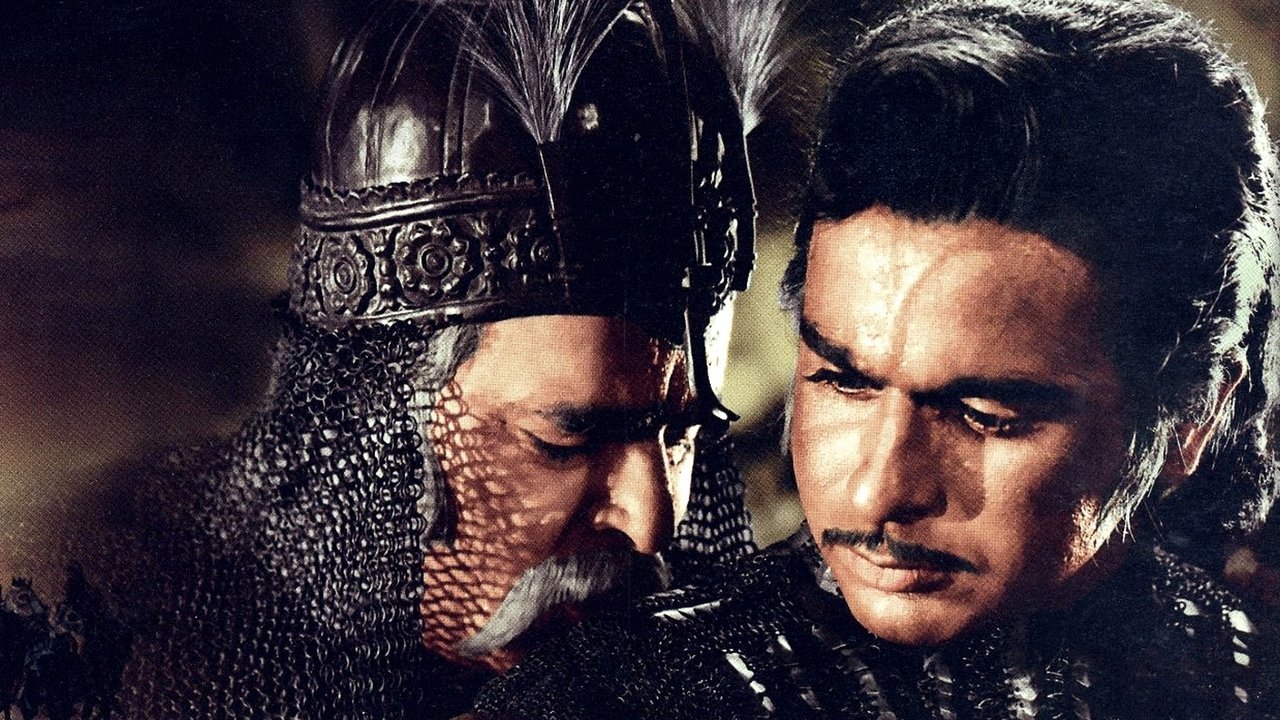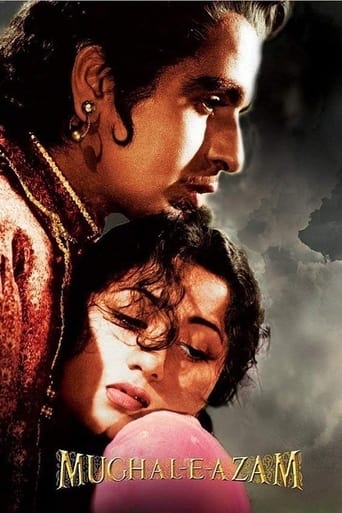

This was the first Indian movie I ever watched, on the recommendation of a friend and if this is how Indians make movies, I really want to watch many more. This movie is a made on a phenomenally grand scale (think BenHur or Gone with the Wind). Each frame seems like a work of art and while the subtitles may have stolen some of the richness of original dialog, the screenplay and expressions of the actors was enough to convey the depth of the storyline. I was absolutely floored by the exquisitely beautiful and talented actress in the lead role- MADHUBALA ! She shines with such a natural and wholesome radiance and commands every scene in which she is present. In the first song where she is introduced, I dare say that she is a close match to the greatest Hollywood beauties of her time (think of a classic Ava Gardner combined with a teasing Marilyn Monroe). She looks authentically scared, scarred and tortured in scenes in where she is imprisoned or tied up in chains and in her interactions with the powerful King, her acting is perfection.
... View MoreNote: I've marked the spoiler sign- but this is a well known myth so no surprises here (not even the ending- which is also a popular myth where Anarkali comes back as NurJahan).Prepare to be dazzled. A luscious feast for the senses, the new restored & colorized version allows us to appreciate the fine attention to detail. The colors are breathtaking- and that is when I realized that Sanjay Leela Bhansali- much as I like that director- isn't all that original. K. Asif got there first. Bhansali tried to do the lavish sets, gorgeous costumes, attention to detail, assault of color in Devdas. But K. Asif got there first- and without the digital technology of today.That is only the film's visual victory over your defenses. When there is silence in a scene- you can only just hear the fountains, and the crystal droplets of the "shama daans" or lamps tinkling in the soft breeze. And then there are the gorgeous, tight, beautifully written dialogs rendered in chaste Urdu (by all actors, regardless of religion- Prithviraj Kapoor's progeny might like to take a feather off his cap, and polish up their enunciation - really there is no reason why the poet Ghalib must be referred to as Gaalib by today's lazy actors). It was a relief to my ears which are usually accosted in even the best Karan Johar entertainer, by an unfortunately politicized and degraded Hindustani.Then there are the performances. Albeit some performances and dialogs are melodramatic, over-the-top- especially the ones with the mother, Queen Jodha Bai, yet one must understand the requirement of the time, as well as the archetypes that were (and are) close to the heart of the audiences. These often have religious and mythological overtones which most people would immediately have picked up on- the mother, the wife, the beloved.Technically, so much has been said about the cinematography, especially in the dance scene in the Hall Of Mirrors, and the battle scenes- that I wont repeat them- but I'll just say- pay attention to these and remember these scenes were shot despite the limitations of available technology. Amazing! Finally- the fabulous on screen chemistry of Dilip Kumar and Madhubala. With his nuanced acting and the slightest inflection in tone conveying volumes- Dilip Kumar is simply arresting and with her naughty, flirtatious first dance as Radha, Madhubala conveys the passionate Anarkali. Their scenes together are never vulgar or titillating- just terribly erotic- sensuous- again tactile: Prince Salim brushing a feather against Anarkali's skin...Really- there's so much more to write- but I'll just say that there is a reason this is a classic. Enough said.10/10
... View MoreMughal-e-Azam is indeed a colossal of a movie and its spell binding appeal and courtly grandeur has been further enhanced by the recently released color version.Dilip Kumar, the icon of Indian Cinema and its first super star as well, has rendered complete resonance to the hedonistic persona of prince Saleem. The love travails of the myth of Anarkali have been splendidly captured on the tinsel screen through the superb portrayal by both, Madhu Bala and legendary Dilip Kumar. Besides, Pirthvi RajKapoor has also projected the required prestige and magnitude to the role of Emperor Akbar. It is worth watching, another time in color scope.
... View MoreK. Asif was the Indian "Cecille B. Demille" (who was known as CB, in the industry)conceived and executed his vision on a grand Scale. There will only be one "Ben-Hur", one "Lawrence of Arabia", one "Sound of Music", one "Sangam", one "Gadar-Ek Prem Katha" and only one "Mughal-E-Azam". The grand scale is evident in the lyrical poetry set into music by music maestro Naushad, which laid the rich tapestry for this Magnum Opus. Prithviraj Kapoor, was the doyen, who started Prithvi theaters and was the patriarc of the Kapoor Clan, which included The older Raj Kapoor, Shammi Kapoor, and Sashi Kapoor. The most talented was Raj kapoor, who was the "Barnum" of the Indian Cinema. He made countless movies and everyone of them a masterpiece, but the best was "Sangam" (1963). Baritone voiced Prithviraj Kapoor, was in the same genre as Charlston Heston,Laurence Olivier and Richard Burton, an actor's actor; a style that was unique and patented. After I watched the movie after three decades, few things stood out-the ornate settings for the Madhubala's (Born as Mumtaz Begum, was married to singer/actor Kishore Kumar, and died at age of 36, from a congenital heart problem), dance sequence, the rich music, the beauty of the yesteryear actresses and the devotion of the directors to make a statement-not just a movie. For current tastes and standards("Dabaang" "Three Idiots" "Housefull 2" produced by the Bollywood suvvar scum maggots,) the movie is a drag, but for the masses in the bygone years that starved for class and elegance, this was a treat. I was not too impressed with Dilip Kumar, as young Prince, most of the time he looked distant and lost. Suffice to say he matured to be good actor ("Ram aur Shyam") in the later years. The two that carried the mantle were Kapoor and Madhubala.
... View More